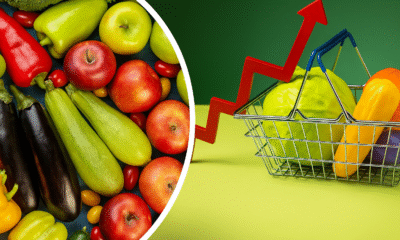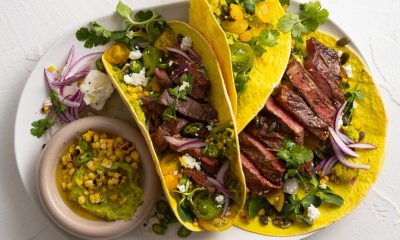Food & Beverage
How Corn Nuts Became Hormel’s Secret Snack Success Story
Once overlooked under Kraft Heinz, Corn Nuts is now Hormel’s surprise gem with bold flavors, new stores and bigger ambitions.
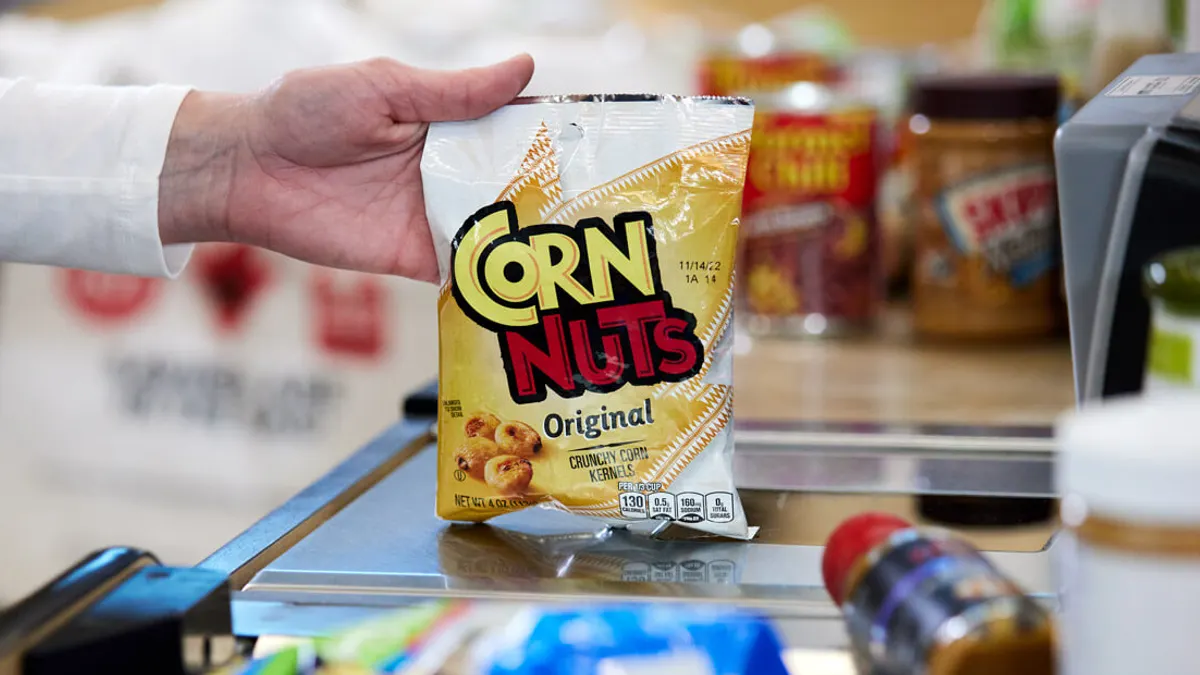
In the world of big food brands, some names hog the spotlight while others quietly wait for their turn to shine. Corn Nuts, the ultra-crunchy bar snack born during the Great Depression, has long been a humble sidekick in America’s snack aisles — until now.
When Hormel Foods made headlines four years ago by snapping up Kraft Heinz’s snack nut portfolio for a hefty $3.35 billion, most of the fanfare rightly focused on Planters — the billion-dollar peanut icon now sitting proudly alongside Hormel’s famous Spam and Jennie-O turkey. But hidden in that blockbuster deal was a dusty treasure waiting to be rediscovered: Corn Nuts.
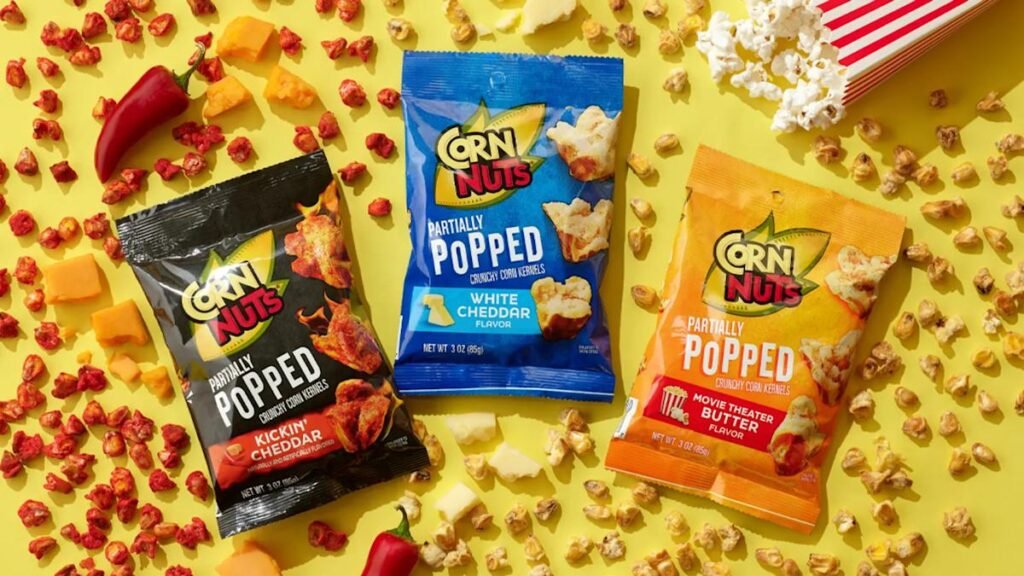
For decades, Corn Nuts coasted on nostalgia and loyal convenience store fans, mostly on the West Coast. Meanwhile, Kraft Heinz poured marketing dollars into Planters, leaving Corn Nuts with minimal innovation and limited reach. But Hormel saw something more: a crunchy, flavor-packed nugget with untapped potential.
“There was this sense it was a diamond in the rough — simple ingredients, huge flavor possibilities, and a clear chance to grow,” said Patrick Horbas, market director for Corn Nuts and Planters, who moved from Kraft Heinz to Hormel with the acquisition.
Hormel wasted no time shaking things up. First, it pushed Corn Nuts beyond gas stations and into mainstream grocery stores and East Coast markets, dramatically widening its customer base. Next, the company ramped up flavor innovation — leveraging the brand’s unique texture that soaks up bold seasonings perfectly.
Today, Corn Nuts offers four core flavors — Original, Ranch, BBQ, and Chile Picante Con Limon — but the real buzz comes from its limited-time launches. Quirky hits like Kickin’ Dill, Loaded Taco, and Mexican Street Corn started as experiments but were so popular they became permanent favorites. As Horbas puts it, “A corn kernel is a great canvas for a lot of things.”
The snack aisle shakeup doesn’t stop there. This May, Hormel introduced Corn Nuts Partially Popped, blending the classic hard crunch with the airy lightness of popcorn. Early sales show promise, and insiders hint this is just the beginning — Hormel is exploring fresh product forms that could turn Corn Nuts into an entire snack platform, not just a single crunchy bite.
Of course, pushing a familiar snack into new territory has risks. “You’re introducing something new, so it takes more education and trial,” Horbas admits. “But the upside is huge.”
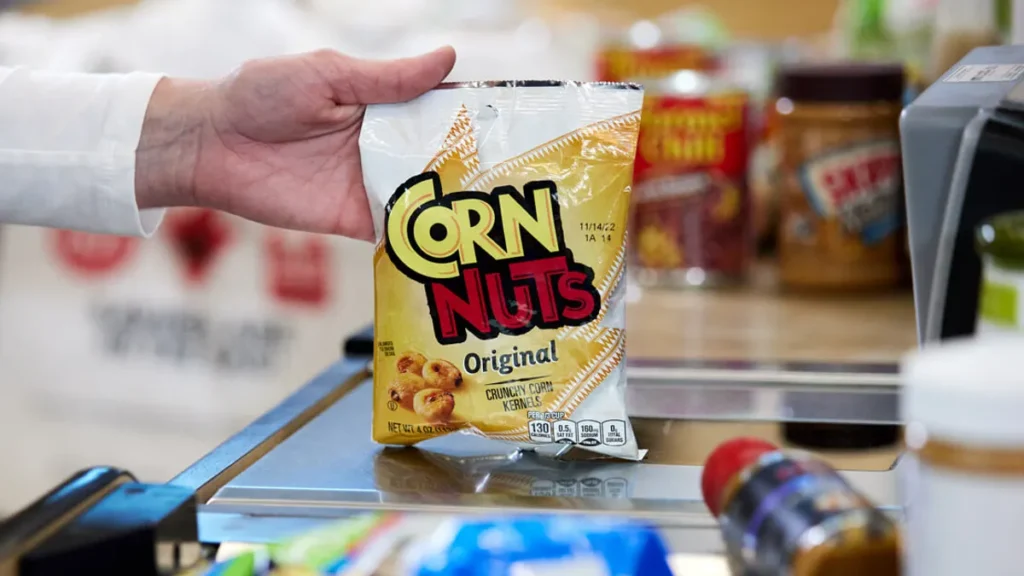
So far, Hormel’s bet is paying off. According to company sources, Corn Nuts has seen steady growth in household penetration, sales, volume and shelf presence — a rare success in a fiercely competitive snack market where big brands often overshadow smaller labels.
In a world craving bold flavors and quirky snacks, this once-overlooked bar staple is suddenly a rising star in grocery carts across America. For Hormel, Corn Nuts just might be the crunchy underdog that proves sometimes, hidden gems really do become crown jewels.
Food & Beverage
New Ketchup That Won’t Drip Chocolate Cereal from a Leprechaun August 2005’s Wildest Food Launches Will Shock You
From energizing jelly beans to upside-down ketchup bottles August 2005 was a game-changing month in America’s food industry—here’s what made taste buds and headlines explode.

In a summer marked by flavor innovation and bold marketing, August 2005 delivered one of the most eclectic and buzzworthy waves of food product launches the U.S. had seen in years. From performance-enhancing candy to reinvented classics, brands across the board were out to win the war for shelf space—and consumer loyalty.
Jelly Beans Go to the Gym
Forget candy for kids—Jelly Belly turned their sugary treats into fitness fuel with the release of Sport Beans. Designed for athletes, these slightly oversized jelly beans boasted 25g of carbs, electrolytes, and vitamins C and E in every 1-ounce pack. It was a bold step into the $3.2 billion sports nutrition market—and according to VP Pete Healy, marathoners had already been sneaking Jelly Belly into their routines. Now, they had a reason to do it guilt-free.
Coca-Cola’s Powerade Option: Hydration, But Make It Skinny
The Coca-Cola Company responded to calorie-conscious consumers with Powerade Option, a low-calorie sports drink offering hydration with just 10 calories and 2 carbs per 8 oz. Sweetened with sucralose, the drink retained essential electrolytes and B-vitamins, and launched in standout flavors like Black Cherry and Strawberry.
Stouffer’s Corner Bistro: Restaurant Dining, Now From Your Freezer
As curbside pick-up became America’s fastest-growing dining trend, Nestlé launched Stouffer’s Corner Bistro Meals, frozen dinners designed to replicate restaurant quality. With flavors like Seafood Scampi and Garlic Chicken Pasta, the line aimed to keep families eating in without sacrificing flavor. “We asked our consumers what would make them rush home,” said marketing director Christine Dahm—and then their chefs delivered.
Hunt’s Ketchup Gets Thicker—And Bolder
If you thought ketchup was just ketchup, Hunt’s was out to change your mind. Their new ultra-thick formula was so dense it didn’t drip through a strainer—on purpose. Combined with an Always Clean Cap and ergonomic Easy Grip bottle, the rebrand was all about mess-free, bold flavor. “We want people to try Hunt’s again for the first time,” said VP Valerie Sheppard, hinting at the brand’s confidence with a full taste guarantee promotion.
Dove Steps Into Ice Cream, Cookies—and Emotional Snacking
Already known for its decadent chocolates, Dove (chocolate), a Mars Inc. brand, launched into three new categories: ice cream, cookies, and caramel-filled miniatures. Wrapped in glossy ganache and loaded with gourmet flavor profiles like Cappuccino Chocolate Thrill, the rollout included signature Dove moments like inspirational messages inside wrappers. It was indulgence with a soul—and consumers ate it up.
Lucky Charms Gets Chocolatey for the First Time Ever
For the first time in 40 years, Lucky the Leprechaun expanded his cereal empire with Chocolate Lucky Charms. Keeping the eight iconic magical marshmallows but adding whole grain chocolate cereal, the launch from General Mills offered a nostalgic twist with a modern flavor. Marketing manager Jon Horn called it “a new breakfast experience” that didn’t compromise on fun or nutrition.
From Jelly Beans That Fuel Marathons to Chocolate Dreams at Breakfast…
August 2005’s food innovations reflect how brands were pushing boundaries, blending health, indulgence, and convenience in entirely new ways. Whether it was portion-controlled jelly beans, upside-down ketchup, or restaurant-inspired freezer meals, the industry wasn’t just feeding appetites—it was redefining them.
Food & Beverage
Danone spends $65 million on coffee boom as STōK and International Delight prepare for record demand in 2025
Danone North America is doubling down on cold brew and creamer production, investing in a high-tech Florida plant and new distribution hub — here’s how it could reshape coffee shelves across the Southeast.

Danone is pouring more than just creamer into your cup — it’s pouring $65 million into America’s booming love for cold brew coffee.
The multinational food and beverage giant, best known for products like International Delight and STōK Cold Brew, just unveiled a major expansion of its 77-year-old Jacksonville, Florida manufacturing facility. The upgraded plant will significantly boost coffee and creamer output, signaling Danone’s bold bet on the future of caffeinated beverages.
Alongside this upgrade, Danone is also investing in a brand-new regional distribution center in the Jacksonville area — a move that will create nearly 200 direct and indirect jobs and enhance its ability to supply fresh products across the Southeastern U.S.
We are focused on serving our consumers as our business continues to grow and innovate,” said Dan Magliocco, President of Danone North America. “We are committed to accelerating these investments to play our part in driving economic growth.

Why Coffee? Why Now?
The timing is no coincidence.
While many sectors are scaling back due to declining product volumes, Danone is banking on coffee — specifically cold brew — as a growth engine. According to SkyQuest, the cold brew market is expected to explode from under $500 million in 2022 to $3.11 billion by 2030. Danone has already been capitalizing on this surge by expanding STōK into seasonal flavors and even cold-brew-based energy drinks, aiming to create multiple “usage occasions” for the brand.
This strategy reflects a clear understanding of modern consumer behavior, especially among millennials and Gen Z, who prefer bold, flavorful, and cold beverages that can double as both a coffee fix and an energy boost.
The Tech Behind the Brew
The revamped production line in Jacksonville is more than just bigger — it’s smarter.
The facility now features state-of-the-art bottle-molding technology, which allows for a 30% reduction in bottle loss and requires less water to produce recyclable packaging. This not only boosts capacity and efficiency but also aligns with Danone’s sustainability goals — a growing priority for both companies and consumers.
By leveraging advanced tech, Danone is ensuring that the expansion doesn’t just meet demand but does so responsibly and sustainably.
Bigger Picture: F&B in Transition
Danone’s expansion comes at a time of major transformation in the food and beverage industry. While companies like JBS USA and Kraft Heinz are adding capacity, others like PepsiCo and J.M. Smucker are trimming operations to manage falling demand.
This divide signals an industry in flux — and Danone clearly believes coffee is on the winning side.
With its new investments, the company is not only betting big on STōK and International Delight but also positioning itself as a dominant player in the ready-to-drink coffee category, a space that continues to heat up.
Food & Beverage
Kristen Bell’s snack brand gets $4 million makeover and a bold new name you didn’t see coming
Frozen star Kristen Bell has rebranded her snack bar venture from This Bar Saves Lives to All In, signaling a fresh mission, new flavors, and a powerful investment round led by Obvious Ventures.

Kristen Bell, beloved for her roles in Frozen, The Good Place, and as an outspoken advocate for family health and wellness, has announced a major transformation for her social-impact snack bar company. Formerly known as This Bar Saves Lives, the brand is now launching under the punchier, purpose-driven name: All In.
This overhaul comes alongside a $4 million fundraising round, led by Obvious Ventures — the socially conscious firm known for backing bold, mission-led companies.
We’re All In on ingredients that matter, business that gives back, and community-first action that starts close to home,” said James McGinnis, CEO of All In, in a company statement.
McGinnis brings heavyweight industry experience from brands like Clif Bar, and he’s steering this reboot toward a broader audience, with a sleek new look and five crave-worthy flavors, including Madagascar Vanilla. The rebrand retains the spirit of the original mission — to make snacking healthier, ethical, and accessible — but now with a fresh marketing angle designed to resonate with younger, socially conscious consumers.

What’s Different This Time?
All In promises more than just a name change.
- The bars will be gluten-free, palm oil-free, and include a kids-focused line free from the top eight allergens, making it one of the most inclusive snack lines on the U.S. shelf.
- The brand’s visual identity has been revamped to reflect a modern, community-driven vibe.
- The shift focuses not just on feeding the consumer but feeding back into the community — with charitable initiatives still baked into every purchase.
In a time when snacking trends are driven by Gen Z, millennials, and health-first households, All In’s timing couldn’t be better. According to Innova Market Insights, nearly 50% of U.S. consumers bought cereal or energy bars in the past year — a figure well above the global average of 37%.
A Bite of Hollywood, A Whole Lot of Heart
While Kristen Bell isn’t just lending her name to the project — she’s deeply involved in the brand’s mission and advocacy — the company also hopes her influence helps expand its audience. Her role as a co-founder, combined with her authenticity and family-first image, aligns perfectly with All In’s values.
Bell previously described the original brand as “the snack that saves lives,” with earlier versions helping provide therapeutic food aid to children in need. That spirit still lives on, but the brand is now ready to go bigger.
-

 World News4 days ago
World News4 days ago1-Iran Issues Dire Warning to Israel and Defies Trump on Nukes: “We’re Ready to Strike Deep Inside”
-

 Weather3 days ago
Weather3 days agoGilbert Weather Forecast Turns Volatile Heat Advisory and Storm Watch Issued
-

 Sports7 days ago
Sports7 days agoRicky Ponting once said “I learned from the best” but who were Australia’s 5 greatest cricketers ever?
-

 Entertainment4 days ago
Entertainment4 days agoOzzy Osbourne dies at 76 after final concert with Black Sabbath fans say It finally caught up with him…
-

 Cricket1 week ago
Cricket1 week agoTop 5 Fastest Bowlers in Cricket History Who Delivered Blazing Thunderbolts that Shocked the World
-

 Entertainment1 week ago
Entertainment1 week agoColdplay CEO Scandal Shocks Tech World as Viral Jumbotron Clip Forces Astronomer Chief on Leave and Sparks 7 Unbelievable Reactions
-

 Sports1 week ago
Sports1 week agoAndre Russell Drops Bombshell Hint at Retirement from International Cricket — What’s Next for the T20 Fearless Titan?
-

 Entertainment4 days ago
Entertainment4 days ago7 Powerful Lines from Jessica Simpson’s Fade Song That Reveal the Truth Behind Her Breakup








